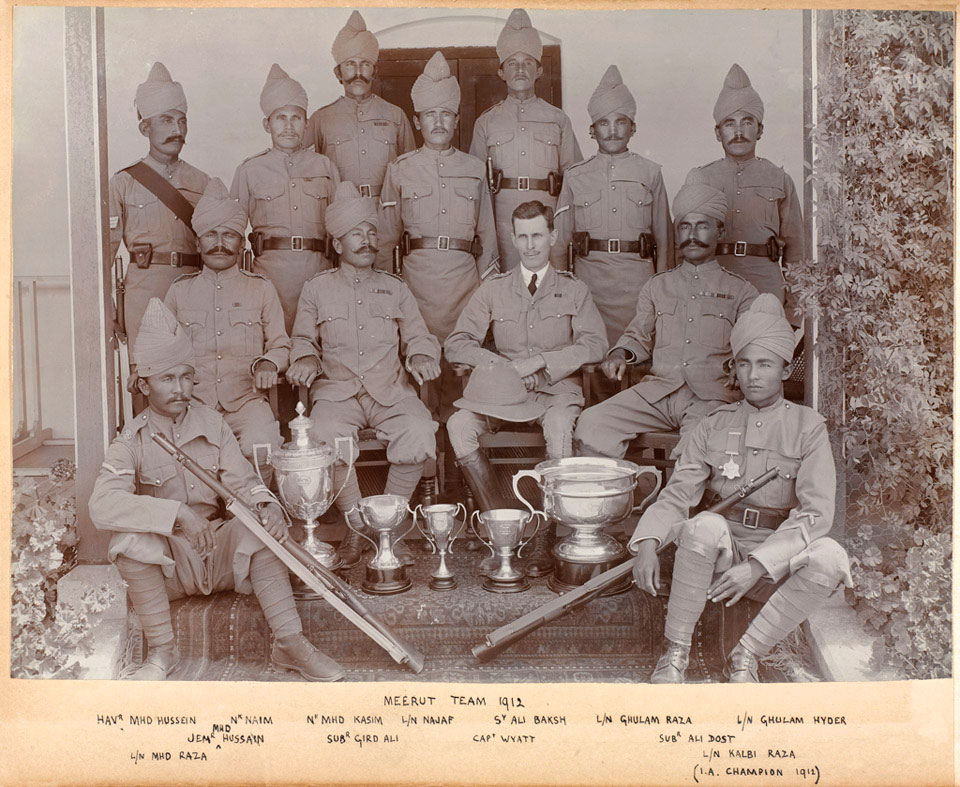
Online Collection
« Prev - 2 of 2 results - Next »
'Meerut Team 1912', shooting team, 106th Hazara Pioneers, 1912 (c)
Photograph, 1912 (c).
Group portrait of a shooting team sitting with a collection of silver trophies. They are named as (rear row, left to right): Havildar Mohammed Hussein, Naiks Naim and Mohammed Kasim, Lance-Naik Najaf, Sepoy Ali Baksh, Lance-Naiks Ghulam Raza and Ghulam Hyder; middle row (left to right): Jemadar Mohammed Hussain, Subadar Gird Ali, Captain (later Lieutenant Colonel) Ernest Robert Caldwell Wyatt and Subadar Ali Dost; seated (front left): Lance-Naik Mohammed Raza; seated (front right): Lance-Naik Kalbi Raza (Indian Army Champion 1912).
The 106th Hazara Pioneers was formed in 1904 by Major (later Field Marshal) Claud William Jacob (1863-1948). Hazaras are an ethnic group of Mongolian origin and Muslim in religion, present in Afghanistan, India, Pakistan and Iran. The unit was raised in Quetta, a centre for Hazara refugee settlement, and was drawn largely from Hazara men from the 124th Duchess of Connaught's Own Baluchistan Infantry and the 126th Baluchistan Infantry. The regiment served in Persia and Mesopotamia during World War One (1914-1918) and in Waziristan (1919-1920). The 106th Hazara Pioneers became the 1st Battalion, 4th Pioneers, in 1922 and the Hazara Pioneers in 1929. The unit was disbanded in 1933.
NAM Accession Number
NAM. 1969-06-34-4
Copyright/Ownership
National Army Museum, Out of Copyright
Location
National Army Museum, Study collection
Object URL
https://collection.nam.ac.uk/detail.php?acc=1969-06-34-4

